When comparing hardware wallet encryption methods, secure elements are essential. They safeguard private keys and defend against attacks like fault or side-channel breaches. Hardware wallets use robust encryption, like AES-256, to protect your assets. MetaMask integration boosts security by adding layers of protection. Evaluating pros and cons helps understand benefits like fault detection. Secure elements shield against threats, but mishandling can risk assets. To safeguard private keys, update firmware and use strong passwords. Certifications like EAL levels are vital for evaluating security. Understanding security elements is critical to making informed choices about hardware wallets.
Table of Contents
Brief Overview of Comparing Hardware Wallet Encryption Methods
- Hardware wallets use robust encryption like AES-256 for secure data protection.
- Different encryption methods impact the level of security in hardware wallets.
- Encryption in hardware wallets shields private keys from cyber threats.
- Understanding encryption variances aids in selecting a suitable hardware wallet.
- Comparative analysis of encryption techniques guides users in choosing a secure hardware wallet.
Secure Element Importance
When considering the security of your hardware wallet, the importance of the secure element cannot be overstated. Secure elements in hardware wallets serve as fortified fortresses, protecting your private keys and seed phrases from potential threats. These small chips act as guardians, warding off fault attacks, side-channel attacks, physical intrusions, malware invasions, and software breaches. They go above and beyond by implementing advanced security measures like fault detection and built-in countermeasures to thwart unauthorized access attempts.
Hardware wallet secure elements are akin to impenetrable vaults, are resistant to known vulnerabilities, and ensure the safety of your cryptographic assets. Their presence is not merely a luxury but a necessity for safeguarding your sensitive data and bolstering the overall protection of your digital wealth. By entrusting your security to these secure elements, you can rest assured that your cryptocurrencies are shielded by the most robust defenses available in the domain of hardware wallets.
Crypto Threat Protection Analysis

When contemplating crypto threat protection analysis, it is imperative to assess the security features and vulnerability assessment results of hardware wallet encryption. Understanding the security features in place will help you gauge the level of protection your assets receive. By evaluating vulnerability assessment results, you can make informed decisions to enhance the security of your cryptocurrency holdings.
Security Features Overview
Hardware wallets employ robust encryption mechanisms to fortify the security of private keys and shield against unauthorized access, enhancing protection against crypto threats. These devices utilize secure elements to provide advanced security features that thwart attacks. Encryption algorithms such as AES-256 are commonly integrated into hardware wallets to safeguard sensitive data.
Hardware wallet encryption is vital in protecting digital assets by ensuring that transactions are securely signed and confidential information is encrypted. The advanced encryption protocols embedded in hardware wallets act as a barrier against cyber threats and hacking attempts, offering users a heightened level of security for their cryptocurrency holdings.
Vulnerability Assessment Results
Evaluating the vulnerability results provides valuable insights into the effectiveness of hardware wallet encryption in protecting against crypto threats. Secure hardware wallets undergo thorough assessments to gauge their resilience against fault attacks, side-channel attacks, and malware, ensuring the safekeeping of private keys and seed phrases. By analyzing these results, users can grasp the robustness of encryption methods employed and identify any weaknesses that may jeopardize the security of their crypto assets.
Understanding these assessments is essential for making informed decisions when selecting a hardware wallet for secure storage. It empowers you to choose a device that offers the highest protection against potential threats, giving you peace of mind regarding the safety of your digital assets.
MetaMask Compatibility Considerations

When considering MetaMask compatibility with hardware wallets, it’s essential to understand how they integrate for added security. Comparing the security features between different hardware wallets can help you make an informed choice. Additionally, considering user experience factors like ease of use and accessibility is essential for seamless interaction with your Ethereum assets.
Metamask Wallet Integration
Considering MetaMask Wallet Integration for improved security and seamless interaction with decentralized applications on the Ethereum blockchain is vital. By integrating hardware wallets like Ledger or Trezor with MetaMask, you can enhance the security of your assets. This integration allows you to store your private keys offline, protecting them from online threats. Combining a hardware wallet with MetaMask adds an additional layer of protection when managing your Ethereum and ERC-20 tokens.
This setup lets you securely sign transactions while engaging with decentralized finance (DeFi) protocols and NFT platforms. Take advantage of the enhanced security features of integrating a hardware wallet into your software wallet, like MetaMask, for a safer and more secure experience.
Security Features Comparison
Evaluating the comparative security features is crucial for seamless integration with MetaMask and the best security. When assessing MetaMask compatibility for your hardware wallet, here are some key security features to compare:
- Level of encryption: Ensure the device offers robust encryption protocols to safeguard your transactions.
- Secure element: Seek hardware wallets with a secure element to enhance the device’s overall security.
- Multi-factor authentication: Choose devices that support multi-factor authentication for an added layer of protection.
- Backup and recovery options: Verify reliable backup and recovery mechanisms to prevent loss of access to your funds.
- Ease of use to sign transactions: Select a device with a user-friendly interface for securely signing transactions.
User Experience Considerations
To enhance your user experience with hardware wallets, prioritize MetaMask compatibility for seamless integration with Ethereum-based services and dApps. MetaMask serves as a bridge between your hardware wallet and various decentralized applications on the Ethereum blockchain, offering a convenient way to manage your assets securely. Choosing hardware wallets that support MetaMask integration allows you to enjoy a user-friendly experience when accessing Ethereum-based services and decentralized finance platforms.
These compatibility considerations guarantee that you can effortlessly interact with Ethereum networks and applications, leveraging the security of your hardware wallet in conjunction with MetaMask’s functionality. Select a hardware wallet that aligns with your MetaMask usage to streamline Ethereum transactions and interactions with dApps.
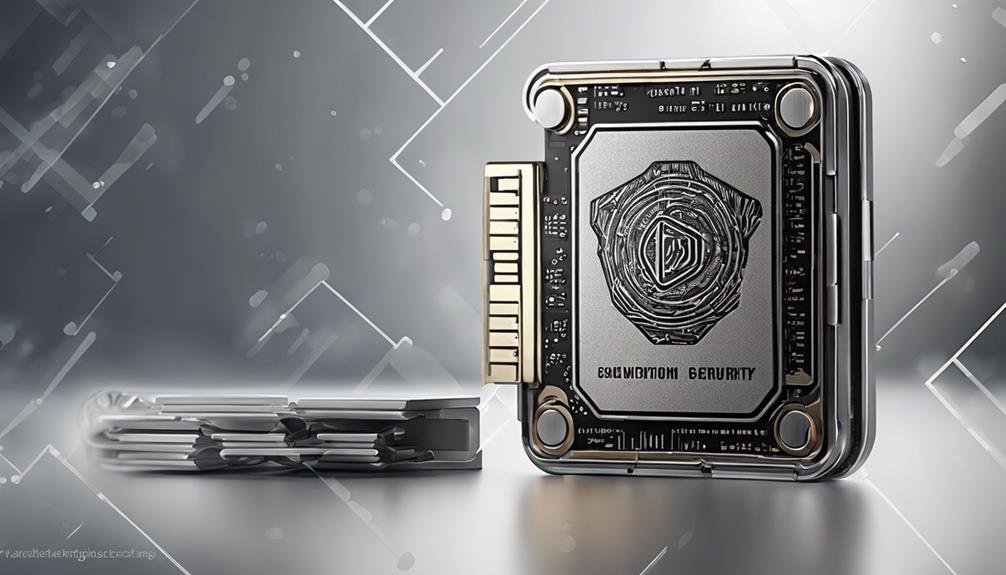
When assessing secure elements in hardware wallets, understanding their benefits and drawbacks is crucial for making informed security decisions. Here are some pros and cons to contemplate:
Pros:
- Enhanced Security: Secure Elements are specialized hardware components designed to securely store sensitive information and perform cryptographic operations. This provides an additional layer of security, making it harder for attackers to compromise the private keys stored in the hardware wallet.
- Protection against Physical Attacks: Secure Elements are tamper-resistant, making them resilient against physical attacks such as side-channel attacks or invasive techniques aimed at extracting sensitive data from the device.
- Secure Key Generation and Storage: SEs enable the hardware wallet to generate and store private keys securely within the device, reducing the risk of exposure to malware or unauthorized access.
- Secure Execution Environment: Secure Elements provide a secure execution environment for running cryptographic operations, ensuring that sensitive operations are protected from external threats.
- Trusted Platform: Hardware wallets with Secure Elements are often considered more trustworthy due to the added security features provided by the SE, giving users confidence in the integrity of their private keys and transactions.
Overall, the presence of a Secure Element in a hardware wallet significantly enhances the security of storing and managing cryptocurrencies, making it a preferred choice for users seeking robust protection for their digital assets.
Cons:
When evaluating the Secure Element in hardware wallets, it’s important to consider the following potential cons:
- Cost: Hardware wallets with Secure Elements tend to be more expensive than basic wallets without this feature. The inclusion of a Secure Element can drive up the price of the device.
- Complexity: Secure Elements are sophisticated components that require specialized knowledge to design and implement. This complexity can potentially introduce more points of failure or vulnerabilities if not properly managed.
- Compatibility: Some hardware wallets with Secure Elements may have limited compatibility with certain devices or operating systems. This could restrict the user’s options when it comes to interacting with their wallet.
- Manufacturer trust: Users must trust the manufacturer of the hardware wallet to properly implement and secure the Secure Element technology. If the manufacturer’s security practices are subpar, it could compromise the effectiveness of the Secure Element.
- Upgradability: The Secure Element in hardware wallets is typically fixed and not easily upgradable. As security threats evolve, users may find themselves needing to upgrade to a new hardware wallet with an updated Secure Element.
It’s important to weigh these cons against the benefits of having a Secure Element in a hardware wallet, such as enhanced security and protection of private keys. Users should conduct thorough research and consider their individual needs when choosing a hardware wallet with a Secure Element.
Considering these aspects will help you assess the advantages and disadvantages of secure elements in hardware wallets, allowing you to make well-informed decisions about safeguarding your digital assets effectively.
Risks Associated With Cold Wallet Elements
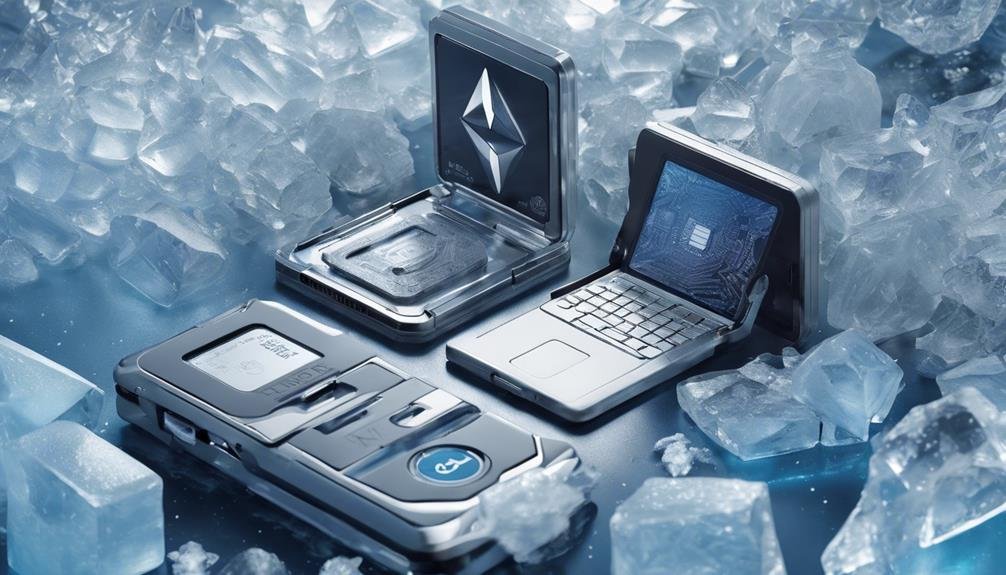
You must be aware of the risks involved when it comes to cold wallet elements. Physical theft, loss, or damage can jeopardize your access to stored cryptocurrencies. Safeguarding private keys and considering vulnerabilities are pivotal aspects of guaranteeing the security of your assets.
Cold Wallet Security
Cold wallet security risks, including physical theft, loss, damage, and exposure to extreme temperatures or environmental factors, pose significant challenges to safeguarding cryptocurrencies. When dealing with cold wallet security, it’s vital to be aware of the following:
- Secure elements in the wallet protect against unauthorized access.
- Potential loss or damage can occur due to mishandling.
- Extreme temperatures could lead to the malfunction of the wallet.
- Environmental factors like humidity may affect the wallet’s components.
- Regular backups and passphrase protection are essential to mitigate risks.
Vulnerabilities to Consider
To ensure the security of your cryptocurrency holdings, understanding the vulnerabilities associated with the components of your cold wallet is crucial. Secure elements in hardware wallets are susceptible to physical attacks, which could result in unauthorized access to your private keys. These vulnerabilities expose your digital assets to threats such as tampering, reverse engineering, and exploitation by sophisticated hackers.
Risks linked to secure elements include the presence of backdoors, supply chain attacks, and weaknesses in the hardware or firmware. It is vital to be aware of these vulnerabilities to make informed decisions when choosing a hardware wallet for securely storing your crypto assets. Recognizing the potential risks can help you safeguard your investments from getting into the wrong hands.
Safeguarding Private Keys
How can you protect your private keys against the potential risks of cold wallet elements? When it comes to safeguarding your private keys, especially in hardware wallets with secure elements, you need to take into account the following:
- Regularly update your hardware wallet firmware to patch any security vulnerabilities.
- Keep your hardware wallet physically secure and safe to prevent tampering.
- Use strong, unique passwords and enable two-factor authentication for added security.
- Avoid using public Wi-Fi or unsecured networks when accessing your hardware wallet.
- Please securely back up your seed phrase and store it in a separate, safe location to prevent loss.
Comparing Hardware Wallet Security
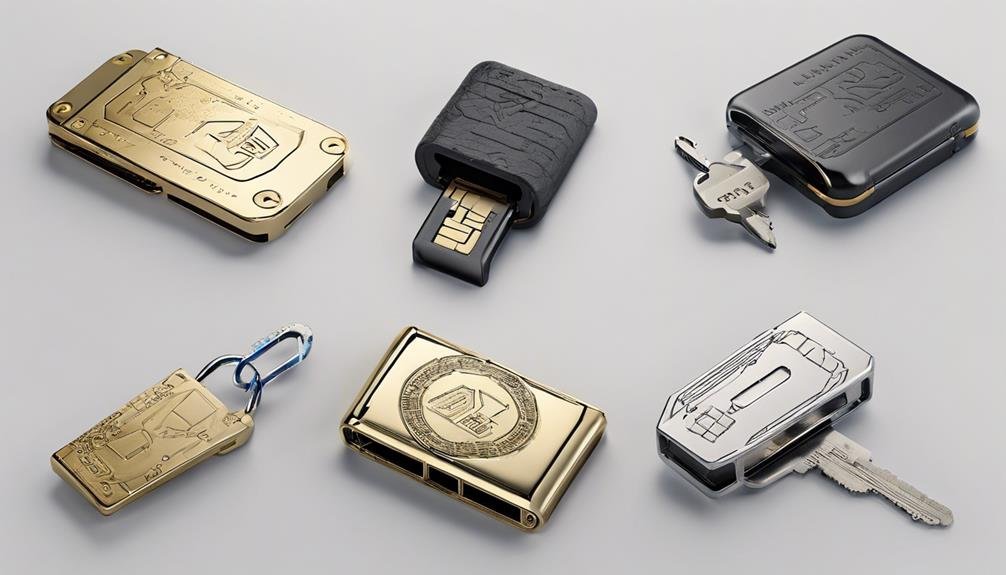
When comparing hardware wallet security, focus on evaluating certifications like Common Criteria (CC) EAL levels and gauging resistance to various types of attacks. Hardware wallets utilize secure elements to safeguard private keys and seed phrases from potential threats. These secure elements provide robust protection against fault attacks, side-channel attacks, physical tampering, and malware attempts.
Establishing a safe environment for cryptographic operations guarantees that sensitive data remains inaccessible to unauthorized parties. Features such as prompt fault detection, built-in countermeasures, and defense mechanisms against known vulnerabilities are integrated to enhance hardware wallet security. Evaluating the security of hardware wallets involves examining their resistance level against different attack vectors and understanding the certifications they hold, like the Common Criteria EAL levels. Considering these factors, users can make informed decisions when selecting a hardware wallet that aligns with their security needs and preferences.
CC EAL Certification Significance
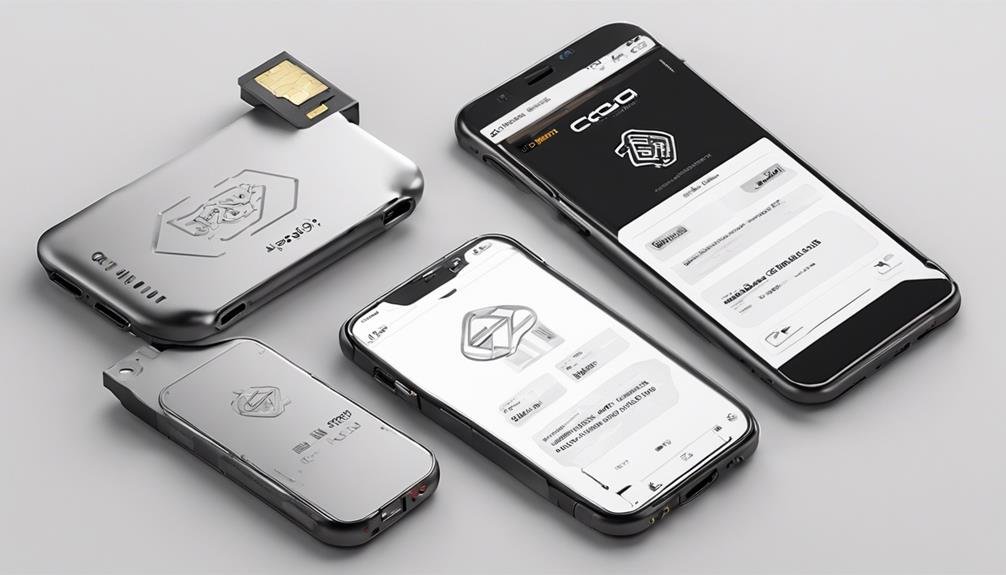
Understanding the significance of CC EAL certification is essential for evaluating the security strength of hardware wallets. When choosing the best hardware wallet for your needs, the primary security provided by EAL certification plays a pivotal role. Here are five key points to ponder:
- International Standard: CC EAL certification is an internationally recognized standard for appraising the security of IT products like hardware wallets.
- Evaluation Assurance Levels: The EAL levels, ranging from 1 to 7, indicate the strength of security measures implemented in the hardware wallets.
- Advanced Protection: Hardware wallets with higher EAL certifications, such as EAL6+, offer significant security enhancements to protect against potential attacks.
- Rigorous Testing: EAL certification ensures that hardware wallets undergo thorough testing procedures to meet specific security requirements.
- Informed Decisions: Investors and users can rely on EAL certifications to make educated choices when selecting a hardware wallet with robust encryption.
Coolwallets Vs. Ledger Security Elements

Comparing the security features of CoolWallets and Ledger involves evaluating their respective secure elements and their impact on safeguarding crypto assets. CoolWallet utilizes an EAL6+ secure element, offering advanced security against physical and software attacks. This high level of certification guarantees robust protection for your private keys and seed phrases. On the other hand, Ledger’s secure element is certified at a lower EAL5+ level, making it less secure than CoolWallet.
The difference in certification levels indicates that CoolWallet may provide a more secure cryptocurrency storage environment. While both wallets aim to secure your assets, the advanced security features of CoolWallet’s tamper-proof secure element may offer enhanced protection. When deciding between CoolWallet and Ledger, the security elements play a crucial role in safeguarding your crypto assets, making it essential to evaluate the level of security provided by each device.
Auditing Hardware Wallet Security
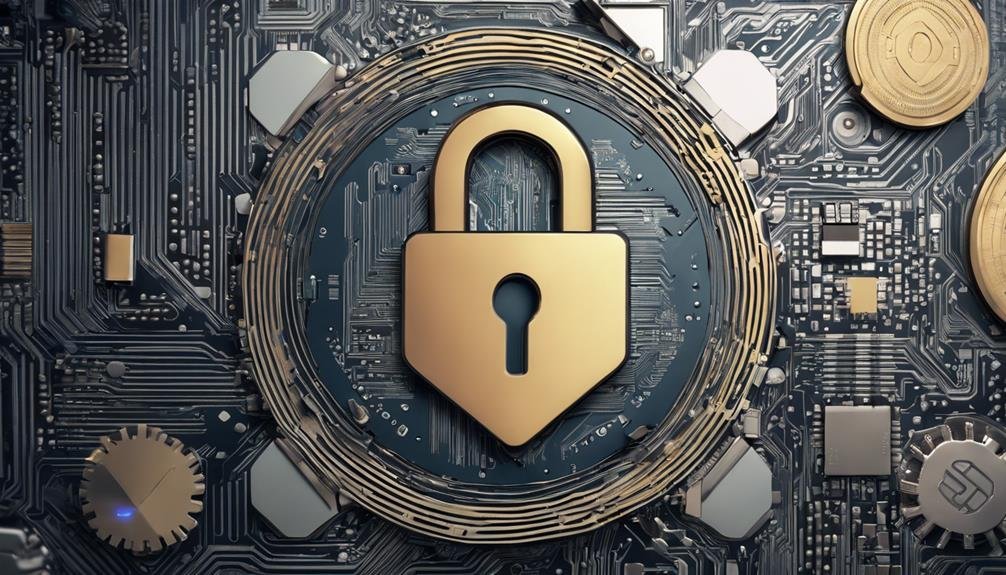
To guarantee the robustness of hardware wallet security, thorough audits must be conducted to verify the implementation of security measures and protocols. Auditing hardware wallet security involves evaluating the hardware and software components for vulnerabilities and confirming that all security features function as intended. Here are some critical aspects of auditing hardware wallet security:
- Independent Audits: Independent security audits are vital for identifying potential weaknesses.
- Vulnerability Evaluation: Audits help evaluate vulnerabilities in hardware and software components.
- Functionality Verification: Auditing ensures that the security features are working as designed.
- Enhancing Security: Identifying weaknesses through audits helps improve the device’s overall security.
- Regular Audits: Regular security audits are essential to maintain the integrity and trustworthiness of hardware wallets.
CoolWallets EAL6+ Evaluation
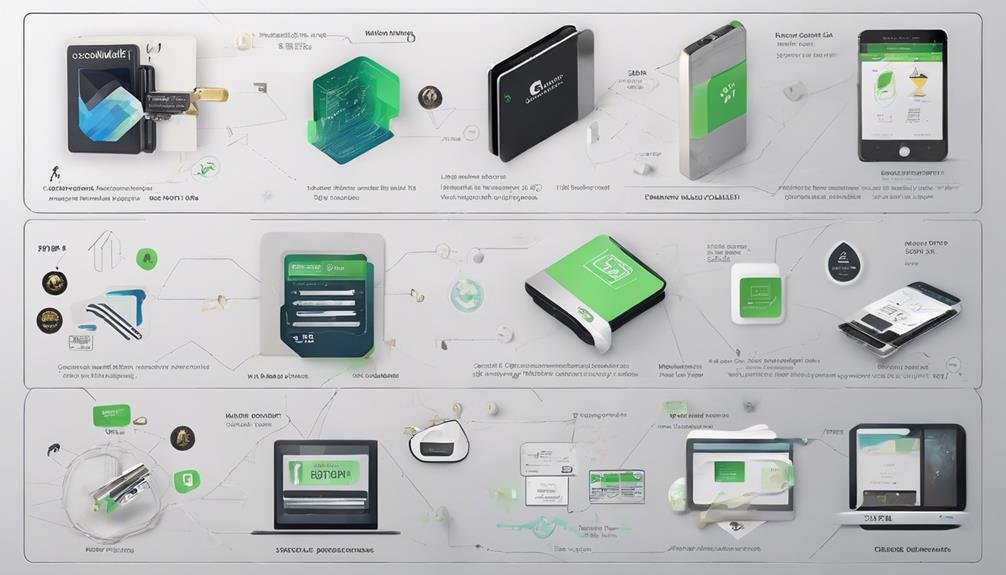
CoolWallet’s achievement of EAL6+ certification highlights its industry-leading security standards. The secure element chip in CoolWallet undergoes rigorous testing to meet the highest security assurance level, ensuring robust protection against advanced attacks. With EAL6+ certification, your private keys are safeguarded from physical and cyber threats, offering you peace of mind in securely managing your digital assets.
CoolWallet’s tamper-proof design and the secure element chip provide excellent security features that cryptocurrency holders can trust. The EAL6+ evaluation underscores CoolWallet’s dedication to prioritizing advanced security measures, making it a reliable choice for safeguarding your valuable assets. By choosing CoolWallet, with its certified secure element chip and EAL6+ rating, you are investing in a hardware wallet that prioritizes the protection of your digital wealth.
Frequently Asked Questions
Is Hardware Wallet the Most Secure?
Yes, hardware wallets are the most secure option for storing cryptocurrencies. Their advanced security features, secure elements, and physical confirmation for transactions significantly reduce vulnerabilities to online hacking attempts compared to software wallets or exchanges.
How Safe Is Ellipal?
Rest assured when it comes to Elliptical security. With its air-gapped technology, secure element chip, and user-friendly interface, Ellipal offers excellent protection for crypto assets. Its durability and positive reviews further attest to its reliability.
How Safe Is Tangem?
Tangem security is excellent, utilizing a secure element chip for protection. Its tamper-evident design enhances reliability. With unique serial numbers and NFC capability, Tangem offers secure offline crypto management. It’s a safe and convenient storage solution.
What Is the Most Secure Physical Crypto Wallet?
Choose one with high-quality encryption and tamper-resistant features for the most secure physical crypto wallet. Cold storage and strong key management are essential for safeguarding your digital assets. Prioritize security to protect against potential risks.
Conclusion
To sum up, when it comes to hardware wallet encryption, selecting the appropriate secure element is essential for safeguarding your cryptocurrency. Consider factors like Secure Element Importance, Crypto Threat Protection, and MetaMask Compatibility. Assess the advantages and disadvantages of different secure elements, such as Coolwallets and Ledger. Keep in mind that protecting your assets with a certified hardware wallet like CoolWallets EAL6+ can offer peace of mind in an unpredictable digital landscape. As they say, a secure element is worth a thousand hacks.




